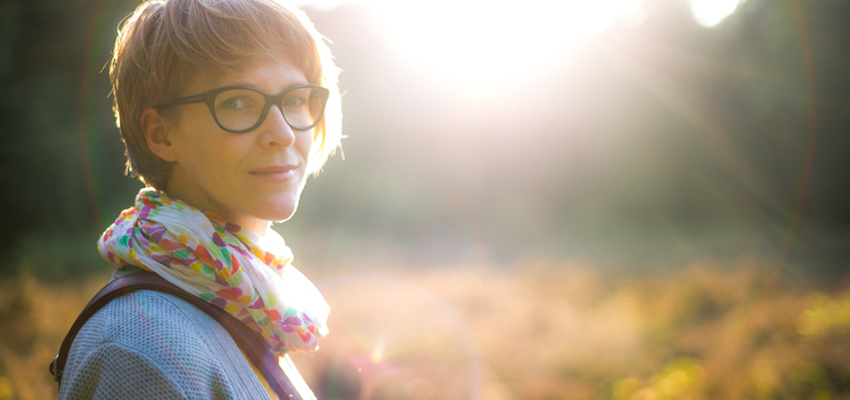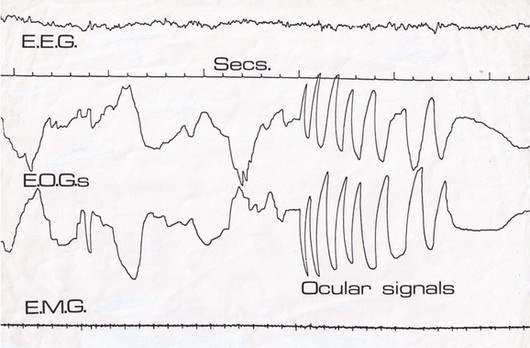
According to some researchers, it can, particularly for those with low-self esteem. Telling yourself, "I am beautiful," when you don't feel that way, can lead to thoughts about how it's just not true. The positive affirmation may actually result in unflattering thoughts about yourself, causing even more sadness — when all you ever wanted was to be happy.
When I was working to change my own mindset, I experienced this very phenomenon. I'd try to think about how lovable I was and then immediately — and grouchily — declare this positive mindset stuff silly.
Before I could truly believe these positive statements, I needed to change a few core behaviors and feelings about myself first.
Here are four ways to feel good about yourself, when positive mantras and affirmations don't work:
1. Practice gratitude.
Make a list of five things you're grateful for. Realizing the blessings already present in your life helps you realize you are worthy of them. Gratitude helps shift thought patterns away from the negative and onto the abundance that surrounds you. Thankfulness is the foundation of a positive mind.
My own life and mindset completely shifted about a year ago when I challenged myself to 30 days of gratitude. Before the challenge, mental lists of what I lacked consumed my mental energy and blinded me to untapped opportunities.
A mind tuned into abundance easily identifies new possibilities. For instance, I don't like where I live, but I am fortunate enough to freelance write full-time, which affords a flexible schedule. With gratitude for my flexible schedule, I began carving out time every day to post inspirational mini-blogs on Instagram and attend yoga teacher training — planting the seeds of a new career.
2. Accept yourself.
Believe that you are perfect just as you are. You don't need to change anything about yourself. Negativity and self-criticism feed off the idea that we are not enough. Believe that you are.
All my life I've been loner. For many years I resisted this, tried to change myself to fit in. But it turns out one of my greatest passions is thinking deeply about life and writing about those thoughts. You can't do that in a crowd.
Many times the things we don't like about ourselves are our greatest gifts. We don't like them because they make us stand out and appear different. But our differences are actually our superpowers.
Only when we accept ourselves for who we are, can we begin to leverage those superpowers and create the life we're meant to live. Once I accepted my preference for hanging out alone, I stopped feeling lonely and was able to fully devote myself to living my passion.
3. Meditate.
Negative beliefs about ourselves are often tied to painful emotions buried deep in the physical body. Meditation helps us clear these blocks, removing the trigger of self-doubt and sadness at the source.
Meditation brought me immense healing after a cancer diagnosis at 27. It wasn't my first dance with grief; my father and sister died a year apart from each other when I was an early teen. Everyone said I was strong in high school after my family died, but nobody said that after cancer. I felt like I was losing my mind.
But in that place of darkness, I learned to meditate, finally sat with a lifetime of accumulated sadness and turned it into light. It was only after fully feeling the pain that it left me for good. Positive thoughts effortlessly radiate from a light-filled body. Sometimes positive thinking has more to do with cleansing the energetic body than shifting thought patterns.
4. Cultivate compassion.
Everybody has rough days. Even if you’re not feeling beautiful or strong or smart at the present moment, that doesn’t mean you are fundamentally flawed. It just means you had a rough day. Be your own best friend. Cheer yourself on even when you’re feeling low. That's compassion in action.
I suffered from depression as a teenager, and was frequently sent to psychiatrists. I grew up thinking that I was deeply flawed. But through meditation and self-acceptance, I realized that just because I was having a tough time, doesn't mean there's something wrong with me.
Sadness is a signal to slow down and inquire within. I am peace and I am OK, even if I don't feel OK in this moment.
Photo Credit: Stocksy
Suzanne Heyn








